Classrooms deserve good lighting
Educational facilities present a challenging lighting environment because they demand a holistic design of the visual, psychological, biological, and photobiological effects of light. Classroom lighting should support a positive learning environment and enhance the educational experience by delivering ambiences and illuminances that are functional and comfortable. Achieving quality lighting in classrooms and other learning spaces involves more than simply installing light fixtures that deliver illuminance required for a given task to be visible. Many issues such as glare, flicker, uniformity, color appearance and quality enter into design and specification decisions for classroom lighting.
Fluorescent lighting is an ugly story
Classroom ceiling lights were once the realm of the fluorescent technology which had been heavily promoted for its higher energy efficiency and longer operational life than incandescent lamps. This technology now does not seem to be a good choice for interior lighting. Much of its luminous efficacy is achieved at the expense of compromised light quality.
Amongst all type of light sources, fluorescent lamps have the worst spectral composition. This type of light sources has the least uniform spectral power distribution (SPD). Their narrow emission spectrums with high blue and green components allow for a high luminous efficacy of radiation (LER), but significantly impair the color reproduction capability of lighting. Incandescent lamps have a uniformly amount of energy emitted at various wavelengths throughout the visible spectrum. The color rendering index (CRI) of these light source is greater than Ra 95. In comparison, fluorescent lighting is much less accurate in color rendering (typical Ra of 70-80).
A much worse problem with fluorescent lighting is that the quest for high efficacy results in the rampant use of light sources with an excessively high correlated color temperature (6000 K to 6500 K). High CCT light sources contain a large amount blue wavelengths that can pose the blue light hazard and can lead to serious health problems if they are used at the wrong biological time. Fluorescent lamps are the greatest source of flickering which severely strains the human eyes and can be overwhelming to students that are vulnerable to flicker.
A lovely story presented by LED lighting
LEDs have emerged as the preferred choice of light source for classroom lighting. This type of solid state light sources allows for greater integration of human needs, architecture, economics and the environment. High source efficacy and long source lifespan bring unprecedented opportunities to reduce the cost of lighting to a minimum. While the trade-off between the color quality of a light source and its LER remains, LED lighting products can still achieve unprecedentedly high efficacies with a light spectrum that delivers radiant power fairly uniformly for faithful color reproduction and an appealing color of light.
The ability to engineering the spectral output of LED light engines makes it possible to provide tunable spectrum lighting that supports behavioral effects such as concentration and attention of students as well as the natural circadian rhythm to increase our well-being and improve our capacity to perform. LED technology has afforded us the chance to build more controls and intelligence into classroom lighting systems. Through connectivity with sensors and networks, smart LED lighting systems can provide energy savings beyond improved source efficiency and address the need for flexibility the educational facilities.

Types of LED ceiling lights
LED ceiling lights of common use in classrooms, auditoriums and computer labs include troffers, flush mount ceiling lights and suspended ceiling lights. Recessed and flush mount fixtures are generally used in spaces with ceiling heights of 9’ or less. They leave enough head room clearance for occupants walking or studying under the fixtures. Recessed and flush ceiling lights are direct lighting systems that direct almost all of the light downward to deliver maximum optical efficiency.
Classrooms with high ceilings of ten to thirteen feet are often illuminated by suspended ceiling lights. Being the most versatile of all classroom light fixtures, suspended ceiling lights can be designed to provide direct, indirect, and direct/indirect lighting. Indirect lighting addresses the inconveniences of direct lighting which can cause glare, shadows, and undesirable visual effects such as dark ceilings (cavern effect). However, indirect lighting often renders the space flat, impairs depth perception and reduces visual clarity. Direct/indirect lighting provides a balance of downward and upward light distributions, which eliminates the shortcomings of each individual approach.
System integration
LED ceiling lights are typically integrated LED systems that build LEDs into the fixtures. This approach brings in multifold benefits to classroom lighting. Direct integration of LEDs allows to make use of the entire fixture housing for heat dissipation, resulting in a shortened thermal path and increased effective surface area of the thermal path. Effective thermal management ensures that the critical LED junction temperatures is maintained at all times. The ability of an LED luminaire to draw heat away from the LED junction is vital to lumen maintenance and color stability of the light source. Through integrated system design, the small size advantage and directional emission pattern of LEDs can be utilized to create optical systems that enable efficient delivery of light from the light source and creation of fixtures with reduced physical volume or novel form factors. Conventional classroom lighting systems are cumbersome in design. Control of light distribution for lamp-based light sources necessitates the use of bulky optical systems.
Drive current regulation
The most overlooked yet important component of an LED ceiling light is the LED driver which regulates the power to an LED load. The two key considerations of the LED driver are its reliability and performance. In order to ensure the expected life of the LED driver matches that of the LED array, sensitive circuits and components in LED drivers should be protected from thermal stresses, power surges and other electrical events. The selected drive current must be maintained regardless of fluctuations in the supply voltage or changes in LED forward voltage. The driver must not only transform power appropriately and efficiently but also generate minimal ripples in the output current.
Aside from reducing the reliability and longevity of the LEDs, large current ripples can lead to flicker. Flicker can cause fatigue of the eyes and also induce headaches, photosensitive epileptic seizures and other health issues in some individuals. Students with autism spectrum disorders (ASD) face struggles and challenges in environments with flickering light. Light flicker may affect their ability to concentrate, making them unable to engage in classroom activities and instruction. Therefore, the ripple value is a critical performance marker for LED drivers incorporated in classroom lighting systems. Flicker-free lighting requires the ripple value to be controlled within ±10%. Quality LED drivers typically employ a two-stage design (active PFC + SMPS) to smooth out large ripples while providing excellent line and load regulation with a high power factor (PF) and low total harmonic distortion (THD).
Dimming controls are often built into LED drivers to maximize the energy savings of lighting control strategies. Compatibility with specific dimming systems such as those based on 0-10V, DALI, DMX, Ethernet or ZigBee protocols is another important performance marker for LED drivers.
Color quality
Light source selection for classroom ceiling lights is a tricky task. The notorious tradition of using low color rendering light sources formed during the era of fluorescent lighting has remained. Color quality is often traded for luminous efficacy in interior lighting applications. Classroom lighting is deemed of high color quality since most classroom activities are visually demanding tasks. A CRI of Ra 90 is suggested for classroom lighting. Compared with color rendition, color appearance of the light source is more of a concern. Armchair expert always make fuss about the blue light hazard of LED light sources.
Just because the commonly used LEDs are blue pump packages that may have a distinct blue peak in their SPD, it doesn’t mean they emit more blue light in total or pose a greater risk for blue light hazard. All visual and nonvisual effects are based on responses to a range of radiant energy rather than a single wavelength. The overall blue content between 400 nm and 490 nm of LEDs in fact is often lower than fluorescent and HID sources having the same correlated color temperature. There’s a strong correlation between the color temperature of a light source and its amount of blue wavelength light regardless of the source type.
Light sources with a CCT above 5,000 K are generally not recommended for classroom lighting because of the high blue content contained in the spectral composition, although a light source with even a daylight white appearance (6,000 K – 6,5000 K) is not considered a risk for photobiological hazard.
Glare control
The most challenging part of designing LED luminaires for classroom lighting is the optical system. LEDs are concentrated sources of bright light, direct exposure to be extremely visually discomforting. Direct lighting systems, in particular troffers and surface mount lights have a greater potential for high angle glare. The excessively high luminances of overhead fixtures must be reduced or shielded to ensure maximum visual comfort. Classroom lighting should be designed to comply with unified glare rating (UGR) of 16 or preferably less. Uniform illumination is equally important in classrooms. The ratio of minimum illuminance to average illuminance over student desks should not be lower than 0.7 (1/1.4).
Glare control and light distribution of direct lighting systems are achieved with optic devices such as louvers, reflectors, lenses and diffusers. It’s a common practice to use parabolic louvers to control glare. A volumetric troffer makes use of light reflecting off its recessed housing to achieve a diffused spread of light. Low-glare LED panel lights feature a compound optical system which consists of a light guide plate (LGP) and a prismatic diffuser.



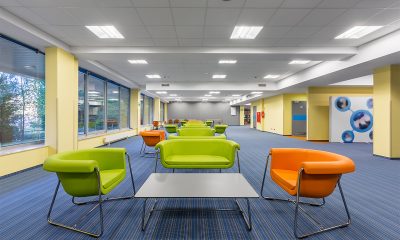

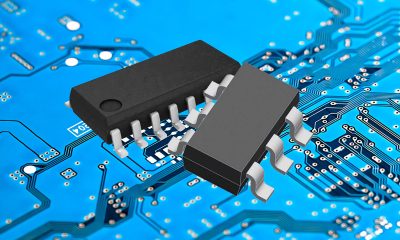
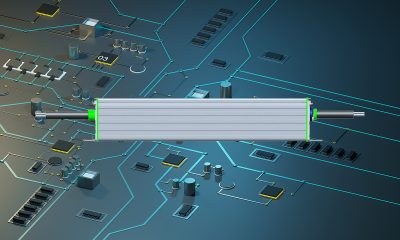
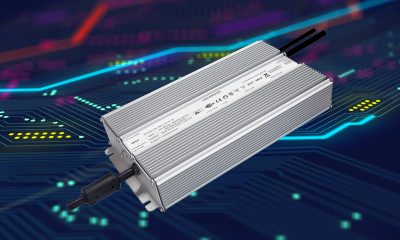
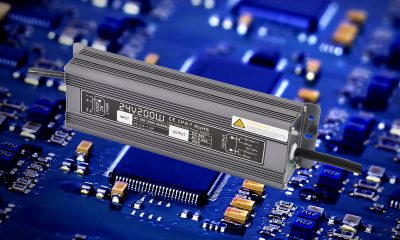




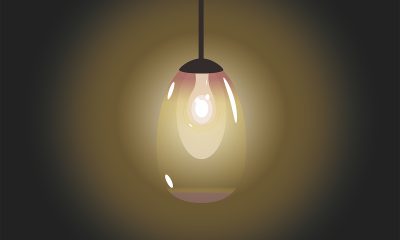





Loading...